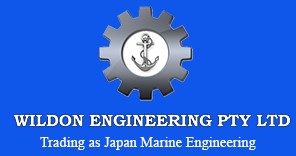Mitsubishi Sludge Buster: Uses and Applications
Blog | January 12th, 2018Oily dregs (sludge) gather like a bottom-of-the-barrel waste puddle inside an ailing fuel tank. This gunk is an insult to every serviceable marine power plant. It gets into the oil feed, spreads to the fuel, and somehow escapes into the water as an environmentally harmful discharge. Built to eliminate this thick residue, a Mitsubishi Sludge Buster is actuating. What’s happening to the tank-besmirching waste now?
Deconstructing a Mitsubishi Sludge Buster
The colourful label provides the biggest clue. The oily waste is being ‘busted’ by an advanced oil purification mechanism. Mounted on top of the equipment assembly, a powerful motor drives the separator stage. There’s a set of discs built into the horizontally oriented vessel. They function as a centrifuge, a cylindrical containment unit that separates two or more suspended fluids by employing spinning action. Essentially, the lubricant or fuel, coolant or metal cutting oil, split because they’re weight differently. As the spinning force fills with sludge, the centrifugal action is accelerating those suspended materials at opposing velocities, so the materials must separate.
Sludge Busting Applications
We can’t seem to escape this term, maybe because it’s a flashy label, which isn’t something most engineering types favour. Anyway, this motor-powered disc stack tends to be installed anywhere there’s sludge. Marine engine fuel and lubricating oil feeds use this fluid purification system. Sure, there are maintenance crews and sludge tanks, plus special chemicals whose sole purpose is to condition this engine-based residue, but wouldn’t an automated solution be better? A Mitsubishi Sludge Buster doesn’t take up much space, doesn’t require a sludge tank, and it doesn’t require much maintenance. Furthermore, it can be repurposed as a coolant cleaner. That’s versatility in motion, as designed by an iconic engineering company. By the way, there are even land-based applications packed into this compact unit. For example, diesel generators and machine shop systems function with fluid-cleansed vigour when this oil purifying equipment is locked into their fuel/oil lines.
That latter example, the machine shop setup, offers some interesting extras. In here, we’re referring to a more open sludge remediation solution. Instead of oil or fuel, it’s a machine cutting coolant that receives the centrifugally effected treatment. That oily residue is hot and loaded with sharp cuttings, but a recently installed Mitsubishi Sludge Buster has set up shop. Tasked with reclaiming the oil, the equipment splits the cuttings, so the machine oil is ready to be used again. Likewise, back on the boat, the oil/fuel is clean because the disc stacks have separated the suspended gunk until it’s a dehydrated mass, piled far from the fluid stream.
Optimized by NetwizardSEO.com.au
Recent Posts
- Yanmar Parts Online Australia – Genuine Yanmar Spare Parts at Competitive Trade Prices
- Turbochargers Supply from Japan Marine: Wildon Engineering’s Excellence in Global Shipping
- Mitsubishi VOS Ballast Water Treatment System: Next-Generation Marine Environmental Solutions
- Yanmar Marine Compressors: Reliable Power Systems for Commercial Vessels
- Water-Lubricated Stern Tube Bearings Explained: How EVR Technology Supports Marine Propulsion
- YANMAR Auxiliary Generator Engine Parts for Commercial Vessels
- Fluid Control Systems: Innovations in Marine Applications
- Yanmar Diesel Generators Australian Distributor: Power for Shipping & Marine Operations
- Navigation & Communication Equipment: Essential Tools for Safe Voyages
- Stern Tube Seals: Preventing Leaks & Maintaining Vessel Integrity
